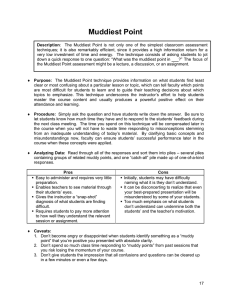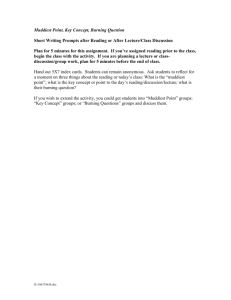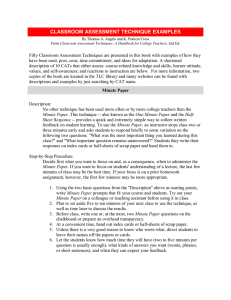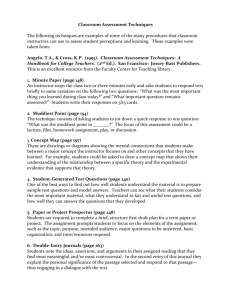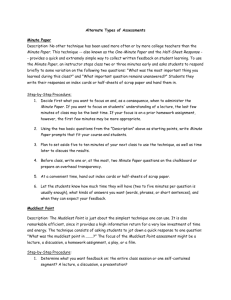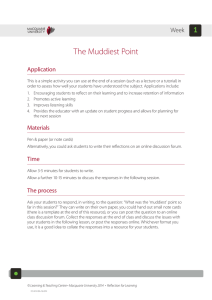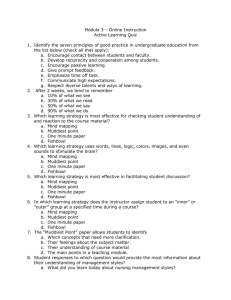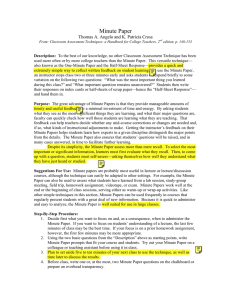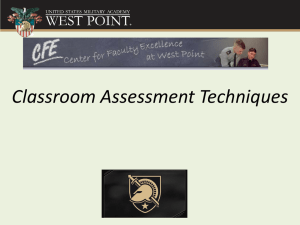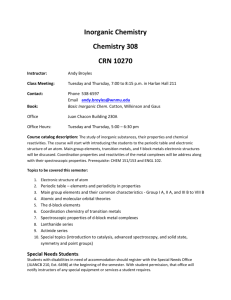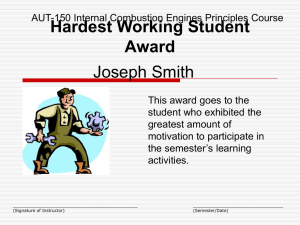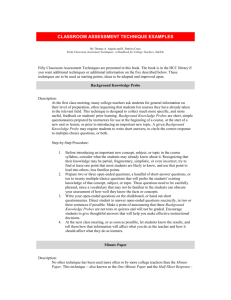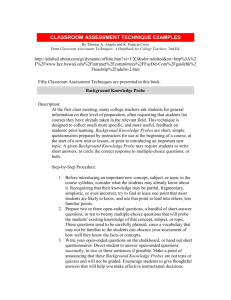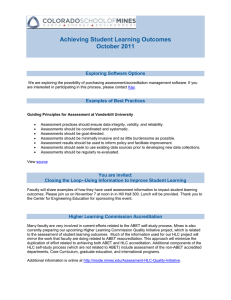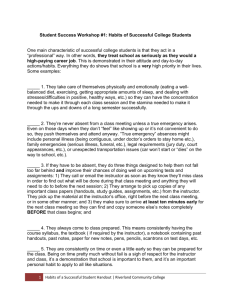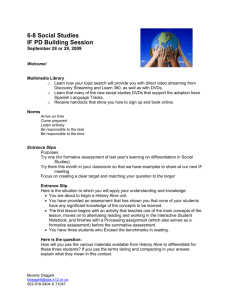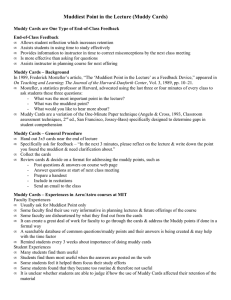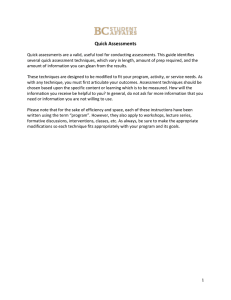Classroom Assessment Techniques
advertisement
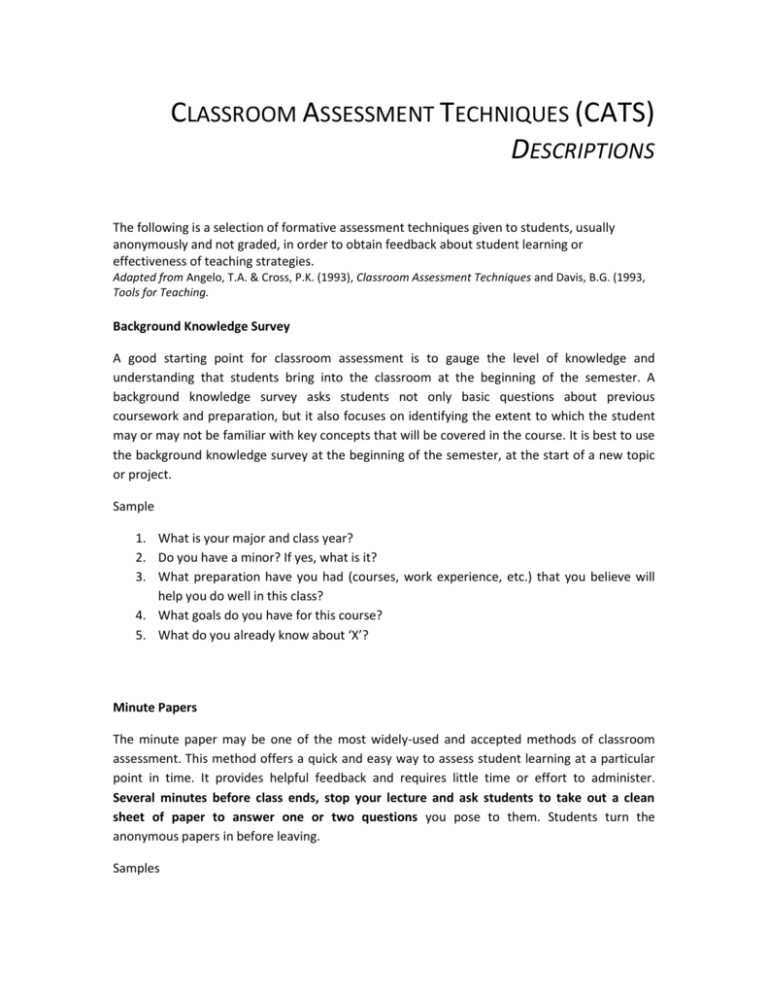
CLASSROOM ASSESSMENT TECHNIQUES (CATS) DESCRIPTIONS The following is a selection of formative assessment techniques given to students, usually anonymously and not graded, in order to obtain feedback about student learning or effectiveness of teaching strategies. Adapted from Angelo, T.A. & Cross, P.K. (1993), Classroom Assessment Techniques and Davis, B.G. (1993, Tools for Teaching. Background Knowledge Survey A good starting point for classroom assessment is to gauge the level of knowledge and understanding that students bring into the classroom at the beginning of the semester. A background knowledge survey asks students not only basic questions about previous coursework and preparation, but it also focuses on identifying the extent to which the student may or may not be familiar with key concepts that will be covered in the course. It is best to use the background knowledge survey at the beginning of the semester, at the start of a new topic or project. Sample 1. What is your major and class year? 2. Do you have a minor? If yes, what is it? 3. What preparation have you had (courses, work experience, etc.) that you believe will help you do well in this class? 4. What goals do you have for this course? 5. What do you already know about ‘X’? Minute Papers The minute paper may be one of the most widely-used and accepted methods of classroom assessment. This method offers a quick and easy way to assess student learning at a particular point in time. It provides helpful feedback and requires little time or effort to administer. Several minutes before class ends, stop your lecture and ask students to take out a clean sheet of paper to answer one or two questions you pose to them. Students turn the anonymous papers in before leaving. Samples 1. 2. 3. 4. What was the most important thing you learned today? What are the five most important points from this section? What questions do you still have about the material we covered today? What stood out to you most about today’s lecture? 5. Misconception/Preconception Check This check is a way to assess what students bring with them into class, or how they are processing information at various points in the semester. Used at the start of a course, the check is a short survey, questionnaire, or essay-type evaluation that asks students to comment on information and key points relevant to course content. Student answers provide the instructor with an understanding of the extent of ‘real’ understanding or knowledge that students bring with them on the first day of class. It also offers information about misconceptions that students may have which the instructor may subsequently address. Muddiest Point The muddiest point exercise is a variation of the minute paper. Administered during or at the end of a lecture or class discussion, the muddiest point exercise asks students to think about what went on in the class that day and to write about what was the ‘muddiest’ (least clear) point during that class. Punctuated Lectures This technique provides immediate feedback on how students are learning from a lecture or a demonstration and how their behavior may be influencing the process. It also encourages student to become self-monitoring listeners and self-reflective learners. The five steps are: Listen- students begin by listening to a lecture or demonstration a. Stop- after a portion of the presentation has been completed, the instructor stops the action b. Reflect- students reflect on what they were doing during the presentation and how their behavior may have helped or hindered their understanding of the information c. Write- students write down any insights they have gained Feedback- students give feedback to the instructor I the form of a short anonymous note http://tenntlc.utk.edu/1087-2/ [last accessed 23rd February 2012]
